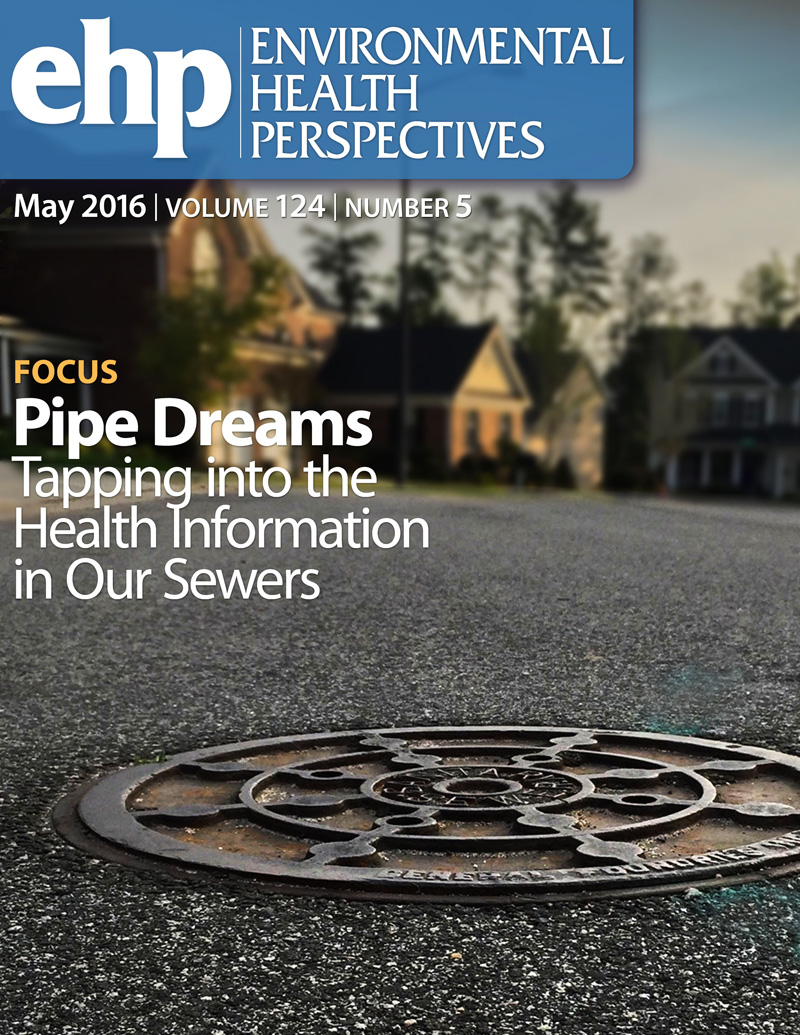Effects of Long-Term Air Pollution Exposure on Disease Outcomes and Hybrid Immune Responses in SARS-CoV-2 Breakthrough Infections: A Study of the Yichang COVID-19 Antibody Longitudinal Survey (YC-CALS) in China.
IF 9.8
1区 环境科学与生态学
Q1 ENVIRONMENTAL SCIENCES
引用次数: 0
Abstract
BACKGROUND As immunity wanes and viral mutations continue, the risk of endemic SARS-CoV-2 breakthrough infections (BTIs) remains. Air pollution is considered a risk factor for respiratory infection, but evidence of its association with SARS-CoV-2 BTIs is limited. OBJECTIVES We aimed to examine the effects of long-term exposure to air pollution on disease outcomes, immune responses, and antibody dynamics of SARS-CoV-2 BTIs. METHODS We gathered data on self-reported SARS-CoV-2 infections through questionnaires and measured IgG antibody levels using serological assays from a total of 6,875 participants from the Yichang COVID-19 Antibody Longitudinal Survey cohort in China. Air pollutant exposure (PM2.5, PM10, PM1, SO2, NO2, O3, and CO) was quantified using validated models for the past five years (2018 to 2022). Logistic and linear regression models were applied to analyze the associations between air pollutant levels and SARS-CoV-2 BTIs, Long COVID, COVID-19 hospitalization, and antibody responses. Quantile g-computation was used to assess the combined effects of pollutant mixtures. A linear mixed model was used to evaluate the effect of air pollution on antibody dynamics. RESULTS Per interquartile range (IQR) increase in PM2.5, SO2, NO2, and CO, the adjusted odds ratios (ORs) for SARS-CoV-2 BTIs were 1.65(95% CI: 1.30, 2.08), 1.30 (95% CI: 1.12, 1.50), 1.63 (95% CI: 1.20, 2.20), and 1.24 (95% CI: 1.06, 1.45). The ORs for PM2.5 were 1.78 (95% CI: 1.07, 3.02) and 2.02 (95% CI: 1.18, 3.54) for Long COVID and hospitalization. Per IQR increase in PM1 and NO2, IgG antibody percentages decreased by -2.31% (95% CI: -4.49%, -0.13%) and -2.69% (95% CI: -5.35%, -0.03%). Effects were stronger in older adults, those with comorbidities, and the under-vaccinated. The combined effect on SARS-CoV-2 BTIs was mainly driven by PM2.5 (59.4%), while the impact on IgG response was largely attributed to NO2 (63.7%). Exposure to the highest levels of PM2.5 (p = 0.002), PM1 (p < 0.001), and NO2 (p = 0.002) was associated with a faster IgG decline than the lowest. DISCUSSION Long-term exposure to air pollution increases the risk of SARS-CoV-2 BTIs and disease severity while weakening the immune response, particularly for vulnerable populations. https://doi.org/10.1289/EHP15660.长期空气污染暴露对SARS-CoV-2突破性感染患者疾病结局和混合免疫反应的影响——宜昌地区COVID-19抗体纵向调查(YC-CALS)的研究
背景:随着免疫力的减弱和病毒突变的持续,地方性SARS-CoV-2突破性感染(BTIs)的风险仍然存在。空气污染被认为是呼吸道感染的一个危险因素,但其与SARS-CoV-2 bti相关的证据有限。目的:研究长期暴露于空气污染对SARS-CoV-2 bti的疾病结局、免疫反应和抗体动力学的影响。方法我们通过问卷调查收集来自中国宜昌COVID-19抗体纵向调查队列的6,875名参与者的自我报告的SARS-CoV-2感染数据,并通过血清学分析测量IgG抗体水平。使用经过验证的模型对过去五年(2018年至2022年)的空气污染物暴露(PM2.5、PM10、PM1、SO2、NO2、O3和CO)进行了量化。采用Logistic和线性回归模型分析空气污染物水平与SARS-CoV-2 BTIs、Long COVID、COVID-19住院和抗体反应之间的关系。分位数g计算用于评估污染物混合物的综合影响。采用线性混合模型评价空气污染对抗体动力学的影响。结果PM2.5、SO2、NO2和CO的四分位数范围(IQR)升高时,SARS-CoV-2 bti的校正优势比(ORs)分别为1.65(95% CI: 1.30, 2.08)、1.30 (95% CI: 1.12, 1.50)、1.63 (95% CI: 1.20, 2.20)和1.24 (95% CI: 1.06, 1.45)。长期COVID和住院的PM2.5 or分别为1.78 (95% CI: 1.07, 3.02)和2.02 (95% CI: 1.18, 3.54)。PM1和NO2每增加IQR, IgG抗体百分比分别下降-2.31% (95% CI: -4.49%, -0.13%)和-2.69% (95% CI: -5.35%, -0.03%)。在老年人、有合并症的人和未接种疫苗的人中,效果更强。对SARS-CoV-2 bti的综合影响主要由PM2.5驱动(59.4%),而对IgG反应的影响主要由NO2驱动(63.7%)。暴露于最高水平的PM2.5 (p = 0.002)、PM1 (p < 0.001)和NO2 (p = 0.002)与IgG下降速度比最低水平的相关。长期暴露于空气污染会增加SARS-CoV-2感染的风险和疾病严重程度,同时削弱免疫反应,特别是对弱势群体而言。https://doi.org/10.1289/EHP15660。
本文章由计算机程序翻译,如有差异,请以英文原文为准。
求助全文
约1分钟内获得全文
求助全文
来源期刊

Environmental Health Perspectives
环境科学-公共卫生、环境卫生与职业卫生
CiteScore
14.40
自引率
2.90%
发文量
388
审稿时长
6 months
期刊介绍:
Environmental Health Perspectives (EHP) is a monthly peer-reviewed journal supported by the National Institute of Environmental Health Sciences, part of the National Institutes of Health under the U.S. Department of Health and Human Services. Its mission is to facilitate discussions on the connections between the environment and human health by publishing top-notch research and news. EHP ranks third in Public, Environmental, and Occupational Health, fourth in Toxicology, and fifth in Environmental Sciences.
 求助内容:
求助内容: 应助结果提醒方式:
应助结果提醒方式:


